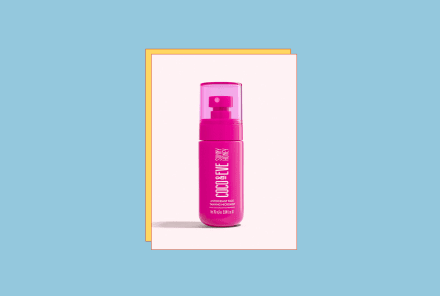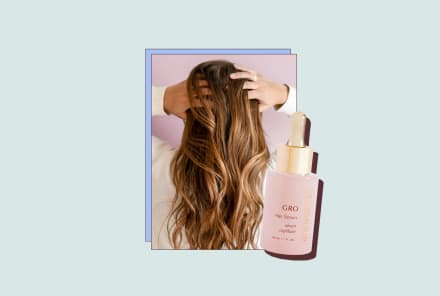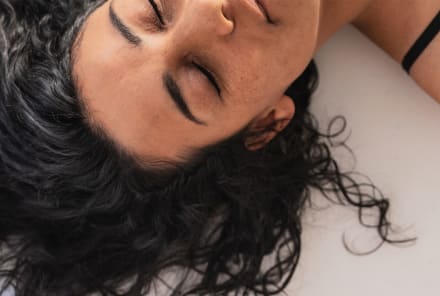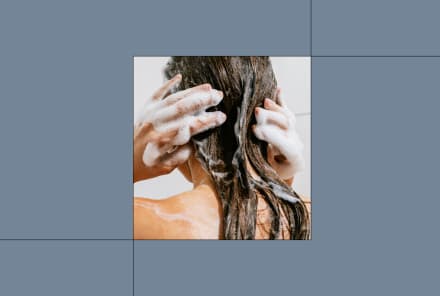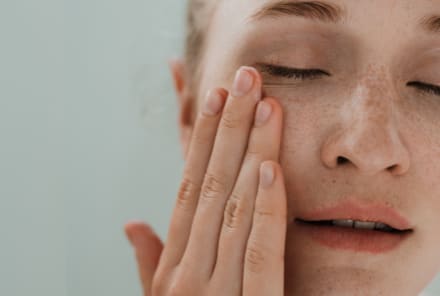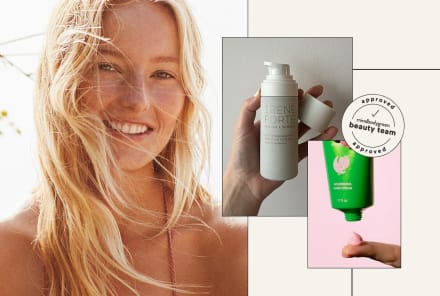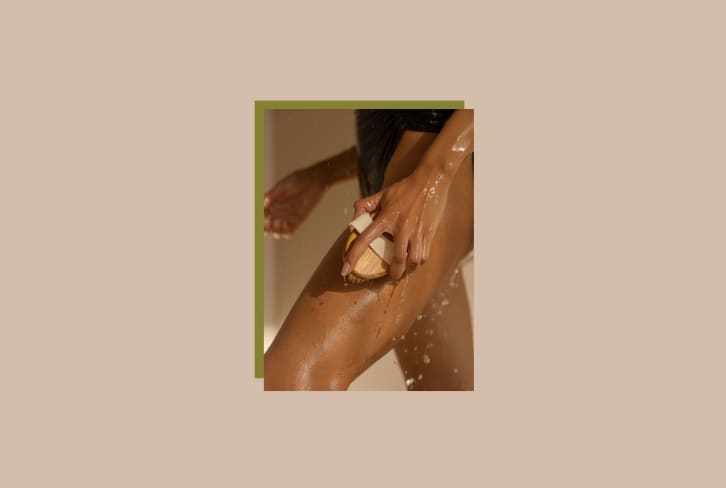Advertisement
8 Dermatologist-Approved Tips To Help An Oily T-Zone (Without Overdrying It!)

Let's chat T-zones for a bit—that oil-slick part of the face that's prone to a midday shine and the unfortunate batch of breakouts. If your skin runs oil-prone, you're likely well versed in the particular set of frustrations associated with it. Obviously the goal is to manage sebum in the area—but then you have to think of the rest of the face, and be mindful not to go overboard on drying ingredients. It requires a delicate hand, this T-zone.
Before we begin, a quick skin care lesson: The T-zone involves an area of the face that spans the forehead and down the bridge of the nose, ending at the chin. (Mentally draw a capital T across your face, and you get the idea.) The area produces more oil for a very simple reason: It has more oil glands. Even if you have dry skin, you'll likely produce more oil in this area versus on other parts of your face. It just becomes a nuisance for oil- or acne-prone people because their skin tends to overproduce sebum inherently. It also tends to be a much bigger issue when you're younger, as your skin does naturally dry out as you age.
So, with this in mind, let's chat about tending to it naturally:
Use AHAs or BHAs.
Chemical exfoliants usually fall into two major categories: alpha- and beta-hydroxy acids. Both topicals can help slough off excess dead skin cells, control oil, and improve overall appearance. If you have very oily skin, your go-to will likely be salicylic acid (the BHA), as it works to dissolve oil itself and can be quite potent. If you have combination or sensitivities, use glycolic or lactic acid (the AHAs) as it will be much gentler. "They can be simultaneously exfoliating and hydrating, making them very beneficial to many skin types," says board-certified dermatologist Mona Gohara, M.D.
Find a retinoid.
Another potent topical, retinoids are beloved for their many skin-boosting attributes. "Retinoids have been shown to reduce pore size, increase skin cell production, and unclog pores," says Melissa Kanchanapoomi Levin, board-certified dermatologist and founder of Entière Dermatology. However, she explains, though retinoids will likely help your skin's overall appearance and reduce any breakouts in the T-zone, it's not actually reducing the amount of oil you're making: "It's important to note that topical retinoids have not been consistently proven to decrease oil production."
Also of note: Some people find retinoids to be too harsh, so ease into it—start with using it for one night every few days, and work your way up. And never layer retinoids with other exfoliators—that will likely be too much. Instead, alternate days that you use the various ingredients, or just stick to one.
Never skip moisturizers.
Consider this a cardinal rule of beauty: Everyone, no matter your skin type or concern, needs to hydrate. "Always moisturize to prevent irritation. Even if your skin feels oily, a light moisturizer is important to tolerate exfoliants and retinoids, and don't forget, too many products can dehydrate skin and lead to breakouts as skin produces extra oil to compensate," says Michele J. Farber, M.D., of Schweiger Dermatology Group in Philadelphia.
Try oil-controlling botanicals.
It's not just exfoliants or potent ingredients that can help your T-zone: There are plenty of botanicals and actives that help manage and control oil production. For example, "Niacinamide and green tea also have data with decreasing oil production," says Kanchanapoomi Levin. This is particularly useful if you find that your skin is also slightly sensitive as well as oily, as these can help soothe skin while balancing sebum production.
Adjust products as needed.
Listen, it's OK to switch up your routine! Even if you find products that generally work well for you a majority of the time, you can make adjustments based on the weather or just how your skin is feeling at that time. This can help you deal with unwanted oil—without going overboard and dry skin out when you don't need to.
"Adjust products depending on your skin and the seasons," says Farber. "It's helpful to alternate between a foaming and hydrating cleanser to help oil control and also prevent dryness. Alternating between a lighter, gel-based moisturizer and a thicker oil-free cream moisturizer is also useful."
Switch to oil-free makeup.
We know that those with oily skin don't need to shy away from oils, sure. (Feel free to use a light, noncomedogenic option if you fancy!) However, we may not give the same advice when it comes to your makeup bag. In this case, it's likely too much oil and usually not the good-for-skin kinds. "Oil-free and mineral-based makeup is often most gentle and tolerable for combination skin,” says Farber.
Chill out.
When we are stressed, our bodies release a hormone called cortisol. There are biologically sound reasons for this; however, the hormone also triggers your pores to produce more oil. (Oil actually gives our bodies a layer of protection—it's why it's a vital part of our skin barrier function.) High cortisol levels trigger a chain of reactions in the body including activating sebocytes, the cells that produce sebum. Too much sebum has been directly linked to acne1.
Watch your cycle.
You know how you may get a bit oilier or break out more right before your period? Well, there are real hormonal reasons for that. "[During this time] there is a surge in luteinizing hormone (LH), which not only harkens a rise in progesterone, but testosterone peaks too, and these two hormones both contribute to increased sebaceous gland activity and oilier skin including an oily scalp and greasy hair," says board-certified dermatologist Keira Barr, M.D.
Watch Next
Enjoy some of our favorite clips from classes
Enjoy some of our favorite clips from classes
What Is Meditation?
Mindfulness/Spirituality | Light Watkins
Box Breathing
Mindfulness/Spirituality | Gwen Dittmar
What Breathwork Can Address
Mindfulness/Spirituality | Gwen Dittmar
The 8 Limbs of Yoga - What is Asana?
Yoga | Caley Alyssa
Two Standing Postures to Open Up Tight Hips
Yoga | Caley Alyssa
How Plants Can Optimize Athletic Performance
Nutrition | Rich Roll
What to Eat Before a Workout
Nutrition | Rich Roll
How Ayurveda Helps Us Navigate Modern Life
Nutrition | Sahara Rose
Messages About Love & Relationships
Love & Relationships | Esther Perel
Love Languages
Love & Relationships | Esther Perel
